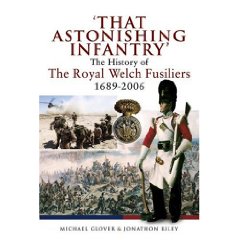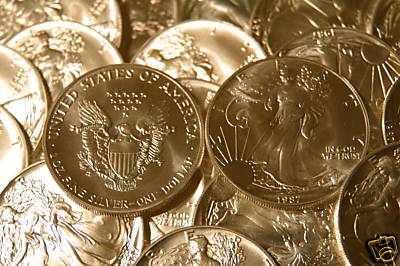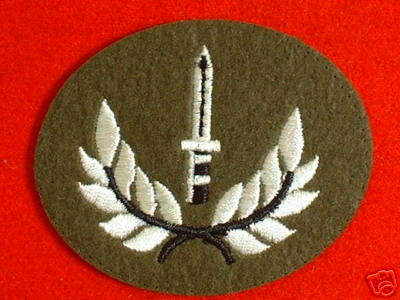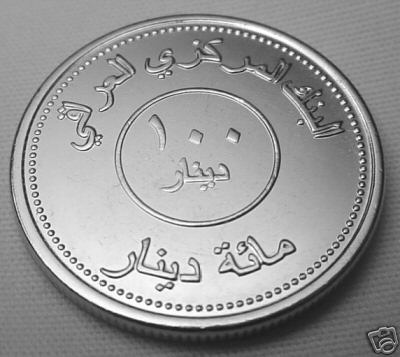-
Posts
208 -
Joined
-
Last visited
Content Type
Profiles
Forums
Blogs
Gallery
Events
Store
Posts posted by mariner
-
-
Certainly no mention of the American Civil War in...........
 0
0 -
wiki http://en.wikipedia.org/wiki/Battle_honour
For the British Army, the need to adopt a system to recognize military units' battlefield accomplishments was apparent since its formation as a standing army in the later part of the 17th century. Although the granting of battle honours had already been in place at the time, it was not until 1784 that infantry units were authorized to bear battle honours on their colours. Before then, a regiment's colours were practical tools for rallying troops in the battle field and not quite something for displaying the unit's past distinctions.
The first Battle Honour was granted to the 15th Hussars for the Battle of Emsdorf in 1760. Thereafter, other Regiments received battle honours for some of their previous engagements.
The earliest battle honour in the British Army, chronologically, is Tangier 1662-80, granted to the 2nd Regiment of Foot, or The Tangier Regiment, the senior English regiment in the Union (after the Royal Scots, the senior Scottish and British Regiment), for their protracted 23-year defence of the Tangier Garrison. The battle honour is still held by the successor regiment, the Princess of Wales's Royal Regiment.[2] During these early years of the British standing army a regiment needed only to engage the enemy with musketry before it was eligible for a battle honour. However, older battle honours are carried on the standards of the Yeomen of the Guard and the Honourable Corps of Gentlemen at Arms, neither of which are part of the army, but are instead the Sovereign's Bodyguard, in the personal service of the Sovereign.
The need to develop a centralized system to oversee the selection and granting of battle honours arose in the 19th century following the increase of British military engagements during the expansion of the Empire. Thus in 1882, a committee was formed to adjudicate applications of battle honour claims. This committee, later called the Battles Nomenclature Committee, still maintains its function in the British Army today
Now that is really interesting!!! What does a Regiment have to do these days then in order to get a Battle Honour? I know several Regiments got Iraq 2003, among others. Can we expect any for Afghanistan, in the near future?...
0 -
Can anyone tell me whether any British Infantry Regiments, where awarded any Battle Honours for this campaign?
If so who? & Which ones.....
If not, does anyone know why? :unsure:
0 -
This article dated today, would suggest that the US mint has now stopped producing 2008 eagles? Or am I reading it incorrectly?
http://sfbay.craigslist.org/sby/clt/854398214.html
 0
0 -
Had a little surf on Ebay, just out of morbid curiosity, and it seems that the Jessica Lynch eagles don`t seem to be commanding the same amounts as they once did?
0 -
The US Mint seems to be renown for making little `mistakes` like this. I sometimes wonder if its all just a money making scam, or a genuine error on their behalf?
http://www.youtube.com/watch?v=A0MZj-kFwvc
Anyone else got any views on this?
Going back onto the value aspect, found this on UTUBE which I thought might be of interest..?
0 -
The new Canadian award on the other thread looks, like a nice medal. Hope the UK one is too. However, I agree with Megan its not a medal that I`d personally want ho,ho,ho.
0 -
Hello everyone,
Can anyone tell me what these badges are awarded for?

 0
0 -
Hasn`t the UK recently decided on a similar award for those killed in action?
0 -
Hi Guys,
Can anyone explain to me how the Battle Honours system works? Is there a set criteria (like with medals) that effects whether or not a Regiment gets the honour or not?
I assume that all battle honours go on the Regimental colours, but do Battalions have seperate colours, which my varie from Battalion to Battalion?
 0
0 -
Possibly........
There's sometimes an identifying prefix, some researchers can deduce the battalion from the range a number falls between - what's the number & period?
No numbers in general, just wondered if there was a hard & fast rule, that I could use?
0 -
-
Shipwrecks, gold bullion, and a chance of a share in buried treasure... no, it's not the Caribbean, but Lough Swilly in County Donegal.
The owners of a ship which sank in the lough in 1917 are to sell shares in the 20 gold bars which it is believed are still in the wreck.
The SS Laurentic was a passenger ship but during the First World War it was used by the British government to transport gold to pay for munitions.
The majority of the 43 tons of gold the ship was carrying when it sank have already been recovered, but the remaining bars are estimated to be worth ?10m.
Ivan Irwin is a diver who has explored what remains of the SS Laurentic.
"The wreck would have been four to five stories when it was originally built, but now it's all sort of collapsed and its flat."
"It's been salvaged two or three times so it's in a fairly broken up state, but you never know, they're still there, so the chances of finding them... there's always possibilities," he said.
Historic value
From Tuesday, anyone interested in owning their own piece of buried treasure can purchase a share in the gold for only ?49 - but don't start planning that early retirement just yet.
Even if the gold was recovered, said Mr Irwin, there's no guarantee of any profit.
"It's very hard to distinguish whether it would belong to the British government, to the family who owns the wreck, or to whoever found it.
"Maybe the thing to do if you did find some gold would be to sit on it for 100 years, when I think it becomes a ward of the state - maybe there's someone doing that, I don't know."
But, said Mr Irwin, owning a share of the shipwreck isn't about the financial reward.
"The shares are more a gesture, to own something of historic value that's sitting in Irish waters.
"I don't think there's actually any money in it, but we'll keep looking for the gold anyway," he said.
http://news.bbc.co.uk/1/hi/northern_ireland/7372811.stm

 0
0 -
 I`ve seen the 1986 version of the silver Northern Ireland one pound coin, on a dealers list for just under ?60!!!
I`ve seen the 1986 version of the silver Northern Ireland one pound coin, on a dealers list for just under ?60!!! 
 0
0 -
This might also be of interest, it appears that they also fought on our side...
http://homepages.force9.net/rothwell/trans-jo.htm
Also this is worth a read...
0 -
IRAQ - Silver DINAR 1973 Oil Nationalization
An interesting coin.....



 0
0 -
2008 Koala

 0
0 -
New for 2008
Silver Eagle

 0
0 -
The old Fils coins used to be made from .500 silver.



 0
0 -
Lorenzo,
Very interesting, thanks for sharing it with us.
Have only recently become aware of "Iraqi niello silver", my understand is that...
Iraqi silversmiths were usually Mandean Christian. They typically employed nielloed designs and are acknowledged to have been very skilled. These Silversmiths were based mainly in Baghdad, Basra and around Maysan province which is in the southern marshes.
In recent years the number of Mandean Christians in Iraq has fallen dramatically.
M
0 -
100 Dinar

 0
0 -
On January 2005, the new Iraqi Dinar Coin series in the denominations of 25, 50 and 100 were launched by Central Bank of Iraq. The new currency is one currency for the entire country of Iraq.
The coins have been issued according to the following specifications of the Central Bank:
The front side of the coin shows the map of Iraq with two dates Hegira, 1425 and A.d., 2004.
The back side of the coin contains a circle that has the denomination of the coin within the circle (25, 50, 100 dinar); "Central Bank of Iraq" is written on the top of the coin, while the denomination of the coin is written on the bottom.
Dinar denomination ; Metal ; Diameter mlm ; Weight, Gram ; Shape
100 ; Nickel plated steel ; 22 ; 4.3 ; Circle/jagged
50 ; Brass plated steel ; 20 ; 3.5 ; Circle/smooth
25 ; Copper plated steel ; 17.5 ; 2.5 ; Circle/smooth

 0
0 -
Phew, can we put this one to bed now?

Yeh think so, many thanks to everyone who put a reply on my thread. Its been really interesting.
 0
0 -
I was reading somewhere a story about the award of one of the Combat Action Badges (can`t remember where, so bear with me...), basically the story went along the lines of a US Military Policeman, did a year tour in Iraq, he was awarded a CAB, for a single incident, during that whole year (nothing else happened during the tour other than this one incident), when his camp was subjected to 20 mortar rounds in a 24 hour period.
 Urban myth maybe who knows....
Urban myth maybe who knows....  0
0




A Coy 4th Battalion Royal Welch Fusiliers
in Great Britain: Militaria: Badges, Uniforms & Equipment
Posted
Came across this `permanent pass` from the 2nd Battalion which I thought might be of interest, dated 1956. The bearer is allowed to leave camp out of uniform, and without a pass. How cool is that!!! :cheers: